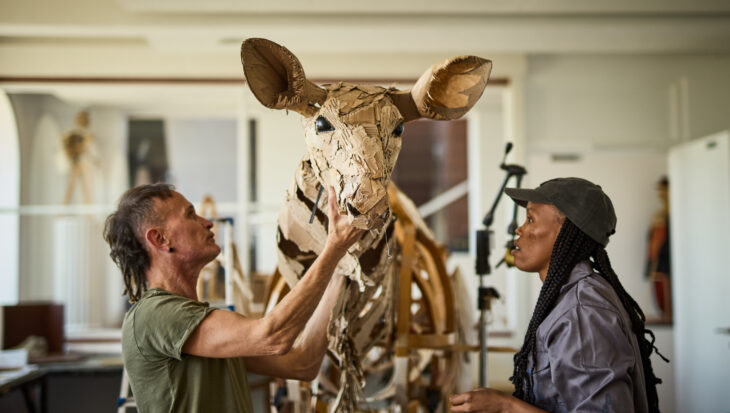‘The Herds’ will be arriving in London this Friday!
Have you heard? A breathtaking arts initiative, ‘The Herds’ will be arriving in London this Friday.
Posted 27 Jun 2025

Posted on the 27th March 2015
Animal Aid has long called for a ban on the use of the whip in racing. Newly published research gives further weight to our argument and brings us closer to our goal.
British racing’s state-of-the-art defence of the whip is spelt out in a 2011 Review of its use conducted by the British Horseracing Authority. However, a newly published ‘critical analysis’ of the BHA Review – which was undertaken because of the whip’s ‘increasing controversy’ – essentially dismisses the BHA document as biased and unreliable. It calls it the work of an organisation ‘that exists to promote, as well as regulate, the racing industry’.
The authors (Jones, Goodfellow et al *) point, in particular, to the Review’s insistence that ‘controlled use of a specific whip does not cause pain’ and that ‘current scientific evidence broadly supports the continued use of the whip in racing’. And yet, say Jones, Goodfellow et al, the Review ‘does not present any evidence to support the statement that the whip does not cause pain’. In fact, ‘despite it being a claimed priority for the industry, there appears to have been no scientific research funded to investigate the welfare impacts of whip use’.
The Jones, Goodfellow report refers to a separate, independent piece of research carried out in Australia, in which 15 races were examined frame-by-frame to study in detail what happens when a horse is whipped. The results were alarming. Seventy-five per cent of whip strikes made contact with the side of the stomach (flanks); 83 per cent left visible indentations and, most shocking of all, while the modern whip has a padded end section, in 64 per cent of all whip strikes that were studied, the hard, unpadded shaft made contact with the horse. There is no reason to believe that a similar analysis would not produce equivalent results in Britain.
Yet more new research from Australia debunks another self-serving industry stereotype. Rather than being a thick-skinned animal who is broadly insensitive to the stroke of a whip, the skin of a horse may, in fact, be more sensitive to pain than a human’s skin. Says Dr Lydia Tong, from the Elizabeth MacArthur Agricultural Institute in New South Wales: ‘We found that, actually, there seem to be more nerve endings in that piece of horse skin, which was a big surprise. In addition, this idea that horses’ skin is thicker and so they are more resistant to pain was a little bit debunked because, in fact, the very top layer of the skin which lies over the pain sensing fibres was actually thinner in horses than it was in people. So, it was only a comparison of the two – one person and one horse at this stage – but it really gave us a lot of food for thought.’
* ‘A Critical Analysis of the British Horseracing Authority’s Review of the Use of the Whip in Horseracing’
Have you heard? A breathtaking arts initiative, ‘The Herds’ will be arriving in London this Friday.
Posted 27 Jun 2025

As the greyhound racing industry releases its annual data on the number of dogs’ deaths, a raft of well-known names - alongside their canine friends - has called upon the Government to end greyhound racing....
Posted 26 Jun 2025
